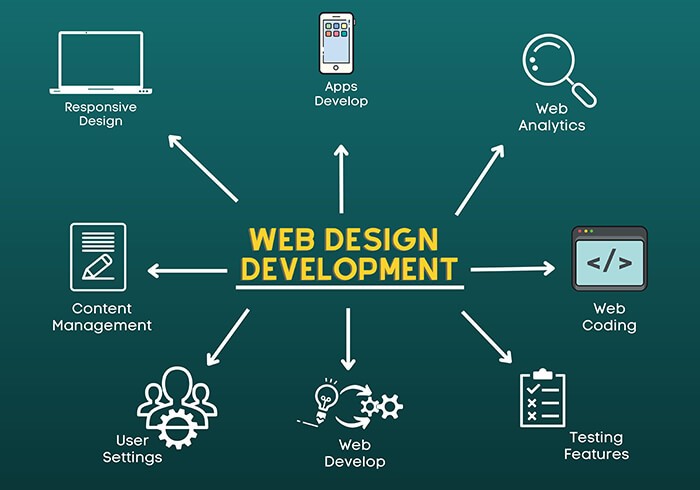
Responsive Design: A Must-Have Skill for Freelance Web Designers
In today's digital age, where browsing the internet has become an integral part of our daily lives, the importance of a seamless and enjoyable user experience cannot be overstated. Whether users are accessing websites on desktops, laptops, tablets, or smartphones, they expect websites to adapt and display content in a user-friendly manner. This is where responsive design comes into play. For freelance web designers, mastering responsive design is not just a skill; it's a necessity. In this comprehensive guide, we'll explore the significance of responsive design, its principles, and how freelance web designers can excel in this essential skill.
The Era of Responsive Web Design
The Changing Landscape of Web Browsing
Explore how the proliferation of various devices and screen sizes has transformed the way users access and interact with websites.
The Role of Freelance Web Designers
Understand the crucial role freelance web designers play in creating responsive websites that cater to diverse audiences.
Understanding Responsive Design
What Is Responsive Design?
Define responsive design and its core principles, which aim to ensure that websites adapt to different devices and screen sizes.
The Evolution of Web Design
Trace the evolution of web design from fixed layouts to responsive design, highlighting the need for adaptability.
The Principles of Responsive Design
Fluid Grid Layouts
Learn about fluid grid layouts and how they enable web content to adjust proportionally across various screen sizes.
Flexible Images
Understand the concept of flexible images, which resize and scale according to the user's device.
Media Queries
Explore media queries, a fundamental component of responsive design that allows designers to apply different styles based on screen characteristics.
Mobile-First Approach
Discover the advantages of adopting a mobile-first approach in responsive design and its impact on user experience.
The Benefits of Responsive Design
Improved User Experience
Examine how responsive design enhances user satisfaction by ensuring that websites are accessible and easy to navigate on any device.
Enhanced SEO Performance
Learn how responsive design can positively impact SEO rankings, mobile-friendliness, and search engine visibility.
Cost-Efficiency
Explore the cost-effective nature of responsive design, which eliminates the need for separate mobile websites.
Future-Proofing Your Designs
Understand how responsive design future-proofs your web projects by accommodating new devices and screen sizes.
Tools and Frameworks for Responsive Design
Popular CSS Frameworks
Discover widely used CSS frameworks like Bootstrap and Foundation that streamline the responsive design process.
Responsive Web Design Testing Tools
Explore tools and resources for testing responsive web designs across different devices and screen resolutions.
Mastering Responsive Design: Tips and Best Practices
Prioritize Mobile Users
Learn the importance of placing mobile users at the forefront of your responsive design strategy.
Optimize Images and Media
Explore techniques for optimizing images and media to ensure fast loading times on all devices.
Test Across Various Devices
Discover the value of thorough testing across a range of devices to identify and address potential issues.
Keep Content Consistent
Maintain content consistency and usability while adapting to different screen sizes.
Challenges in Responsive Design
Browser Compatibility
Address the challenges of browser compatibility and the need for cross-browser testing.
Performance Optimization
Explore strategies for optimizing website performance and ensuring speedy loading times.
Complex Navigation
Solve the complexities of navigation in responsive design, especially for websites with intricate menus and structures.
Responsive Design and SEO
Mobile-Friendly Ranking
Understand Google's mobile-friendly ranking algorithm and how it impacts search engine rankings.
Avoiding Duplicate Content
Learn how to prevent issues related to duplicate content when implementing responsive design.
Page Speed and SEO
Explore the connection between page speed, user experience, and SEO, and how responsive design plays a role.
Responsive Design Trends to Watch
Dark Mode
Discover the rising trend of dark mode in responsive design and its impact on user comfort.
Variable Fonts
Explore variable fonts and how they provide greater typographic flexibility in responsive design.
Voice User Interfaces (VUI)
Learn about the integration of voice user interfaces in responsive designs, catering to voice-activated devices.
Elevating Your Web Design Career with Responsiveness
In conclusion, responsive design is not just a trend; it's a fundamental skill that every freelance web designer should master. By understanding the principles, benefits, and challenges of responsive design, freelancers can create websites that deliver exceptional user experiences across all devices. Moreover, staying up-to-date with responsive design trends and best practices is essential for remaining competitive in the dynamic field of web design. As freelancers, your ability to provide responsive solutions will not only satisfy clients but also open doors to a successful and fulfilling career in web design.
